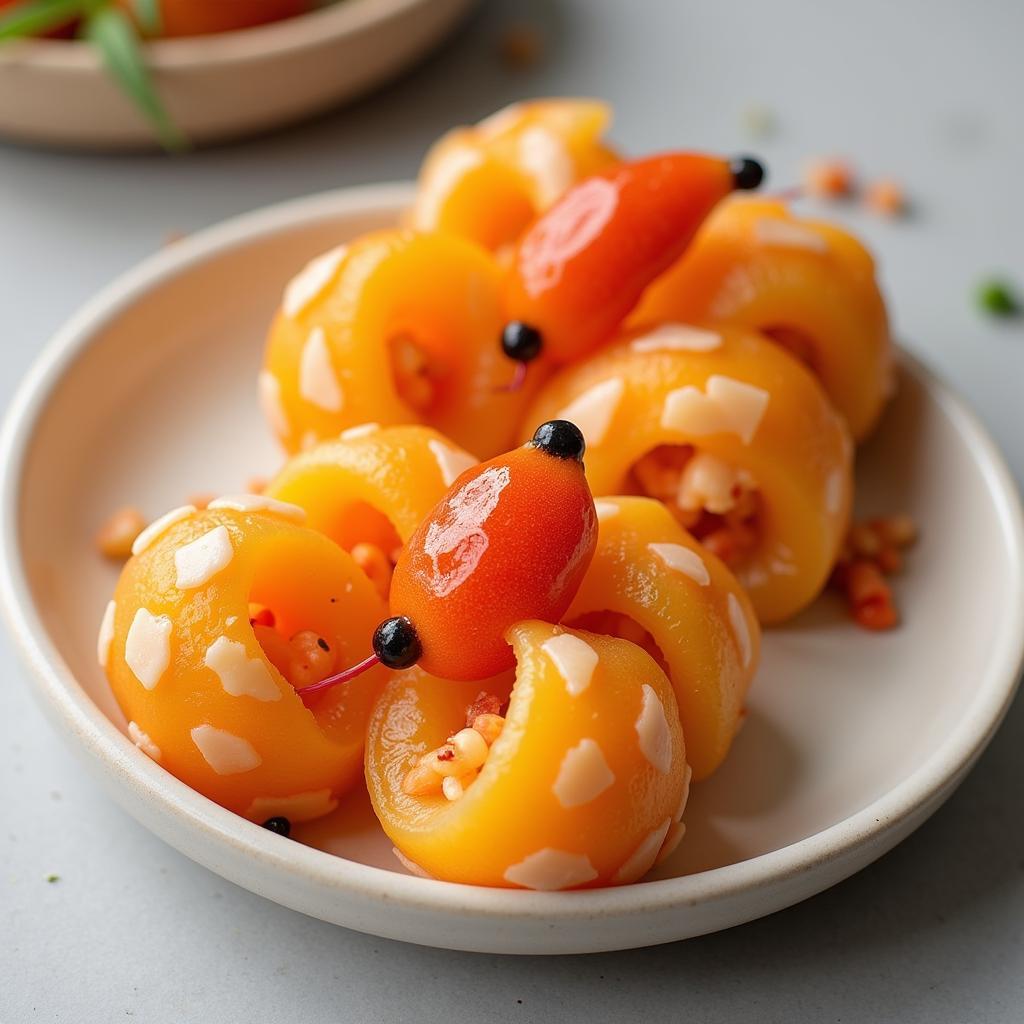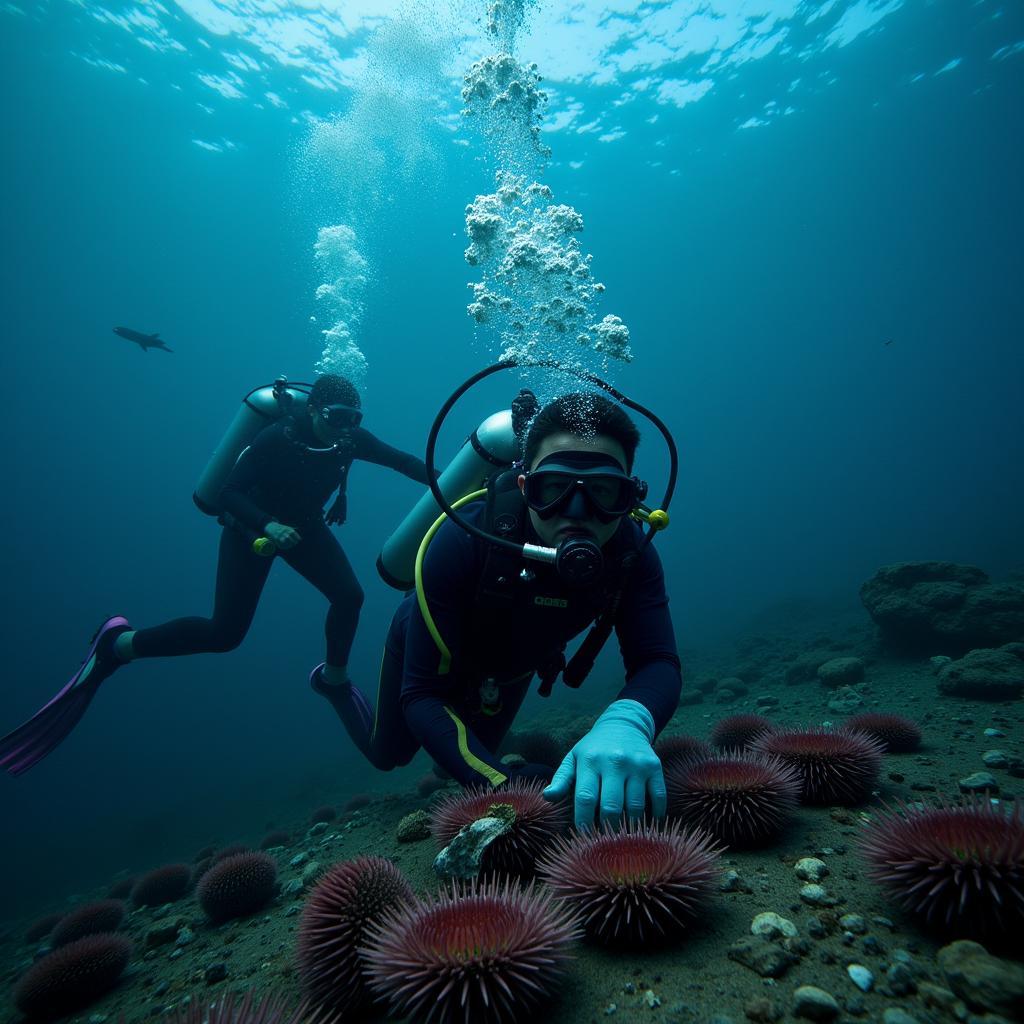Uni, the Japanese word for sea urchin gonads, is a prized delicacy renowned for its rich, creamy texture and briny, umami flavor. But this culinary treasure often comes with a hefty price tag. So, what exactly influences the Uni Food Price and makes it a luxurious indulgence for many?
 Close up of fresh uni served on a plate
Close up of fresh uni served on a plate
Decoding the Factors Behind Uni Food Price
The price of uni can fluctuate significantly depending on a variety of factors, ranging from species and origin to seasonality and market demand. Let’s delve into the key elements that contribute to its premium cost:
Species and Origin: A Tale of Flavor and Rarity
Not all uni is created equal. Certain species, like the highly sought-after Strongylocentrotus droebachiensis found in the cold waters of Maine, are known for their exceptional flavor and texture, commanding higher prices. Similarly, uni sourced from pristine and remote locations often fetches a premium due to the perceived quality and exclusivity.
 Uni divers harvesting sea urchins in the ocean
Uni divers harvesting sea urchins in the ocean
Seasonality and Availability: The Rhythm of the Sea
Uni, like many seafood delicacies, is subject to the ebb and flow of seasonality. The harvesting periods for different species vary, influencing their availability and price. Peak season uni, often characterized by its plumpness and rich flavor, tends to be more expensive due to limited supply and increased demand.
Harvesting and Processing: A Labor of Love
Harvesting uni is a meticulous and labor-intensive process. Divers often brave challenging conditions to hand-collect sea urchins, ensuring sustainable practices and minimizing damage to the delicate ecosystems. Once harvested, the urchins are carefully cracked open, and the uni is extracted, cleaned, and processed, further contributing to its overall cost.
Market Demand and Supply: The Economics of Luxury
The global demand for uni has surged in recent years, driven by its increasing popularity in fine dining establishments and among discerning foodies. This surge in demand, coupled with the inherent challenges in harvesting and processing, has created a classic supply-and-demand dynamic, driving up prices.
Navigating the World of Uni: Tips for Savvy Consumers
While uni’s price tag might seem daunting, there are ways to enjoy this delicacy without breaking the bank:
- Explore Different Species: Don’t be afraid to venture beyond the most popular varieties. Local or lesser-known species can offer excellent flavor at more affordable prices.
- Consider the Season: Opting for uni during its peak season might mean a higher price, but you’ll be rewarded with exceptional quality and flavor.
- Dine Strategically: Lunch menus or happy hour specials at sushi restaurants can offer more affordable options for enjoying uni.
- Communicate with Your Supplier: Whether you’re purchasing from a fish market or dining at a restaurant, don’t hesitate to ask about the origin, species, and freshness of the uni.
Uni Food Price: A Reflection of Value
The high price of uni reflects the intricate interplay of natural factors, demanding harvesting practices, and increasing global demand. While it remains a luxury ingredient for many, understanding the elements that contribute to its cost can enhance your appreciation for this exquisite delicacy.
FAQ
1. What does uni taste like?
Uni is often described as having a rich, creamy, and buttery flavor with a distinct briny and slightly sweet taste. The flavor can vary depending on the species, origin, and season.
2. How is uni best enjoyed?
Uni can be enjoyed in various ways. It’s often served raw as sushi or sashimi, adding a luxurious touch to seafood platters. Uni can also be incorporated into pasta dishes, sauces, or simply enjoyed on its own with a dash of lemon juice.
3. Where can I buy fresh uni?
Fresh uni is typically found at reputable seafood markets, Japanese grocery stores, or specialty food retailers.
4. What should I look for when buying uni?
Look for uni that’s bright in color, plump, and firm to the touch. Avoid uni that appears dull, mushy, or has a strong ammonia odor.
5. How should I store uni?
Fresh uni is highly perishable and should be consumed as soon as possible. If you need to store it, wrap it tightly in plastic wrap and keep it refrigerated for no more than 1-2 days.
Need Help? Contact Us!
Have more questions about uni or other seafood delicacies? Don’t hesitate to reach out! Our team at Mina Cones Food is here to assist you.
Phone: 02437655121
Email: [email protected]
Address: 3PGH+8R9, ĐT70A, thôn Trung, Bắc Từ Liêm, Hà Nội, Việt Nam
We’re available 24/7 to provide you with the information and support you need.